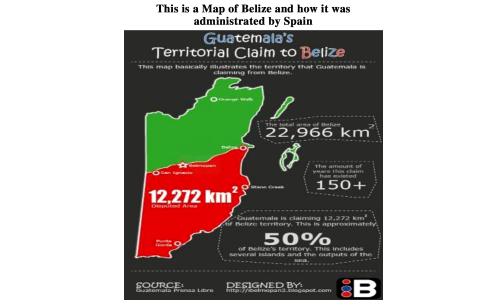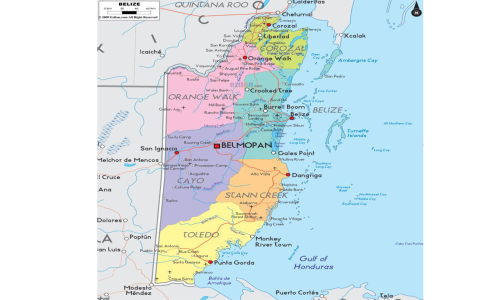By: Wellington C. Ramos, Adjunct Professor in History and Political Science
When I attended school in Belize, most Belizeans were taught that the Spanish attacked the British to remove them from our country of Belize but the British and their slaves fought back and defeated them on the 10th of September 1798, which gave us the rights to our country of Belize.
We were never told in school that there was a Treaty in 1763 Between Great Britain and Spain that granted them permission only to cut logwood and mahogany that had some restrictions, as is outlined in Belize.com below:
Belizean History: The 1763 Treaty Between Spain And Britain

In 1763 a treaty was signed between the British government and the Spanish government which gave the settlement of Belize some kind of status. This treaty allowed the British the “occupation of cutting, loading and carrying away logwood”. It asserted Spanish sovereignty over the area.
The Spanish government again reasserted their sovereignty of Belize in subsequent treaties of 1783 and 1786. In the Treaty of Versailles, which was signed by the British and Spanish governments, the concessions given by Spain to Britain to cut logwood were defined more precisely than in the Treaty of 1763. The Spanish made it very clear that the British were to cut logwood only between the Hondo River and the Belize River and the New River was to be the westerly boundary beyond where no wood was to be cut.
In 1786 another Treaty was signed, referred to as the Convention of London. The Spanish gave permission to the British to cut logwood and also Mahogany as far south as the Sibun River.

It expressly forbade the British from building any fortification, setting up any formal government or doing any agricultural works, or any other productive economic activities apart from wood cutting.
The setters (Baymen) were allowed to gather “all the fruits or produce of the earth, purely natural and uncultivated”. But they were not to establish “any plantation of sugar, coffee, cocos, or other like articles.”
To further emphasize Spain’s ownership over the settlement, the Convention of London provided for Spain to send Commissioners to check-up and examine the settlement twice a year. The Convention of London also specified that in return for the concessions Spain had made, the British was to give up all its other settlements in the region, notably the Mosquito Shore and the island of Roatan.
As a result, the inhabitants of these areas had to be evacuated. The British brought them to Belize. It is written that the evacuation of the settlers and slaves from the Mosquito Shores to Belize was an important event in the social history of the Belize settlement. There was no longer war between Britain and Spain, and they signed the peace Treaty of Versailles on 3 September 1783.
After this, some five hundred to seven hundred persons came to settle in Belize, including “several loyalists from the American (USA) States”. In 1787, some 2,650 persons were evacuated from the Mosquito Shore, of which 2,214 were brought to Belize. They outnumbered the residents in Belize by five to one. Over three quarters of those who were brought were slaves.
By the time of the attack on the settlement in 1779, there were 3,500 persons living in Belize, of which three thousand were slaves. This was quite a contrast to 1735, when there were about five hundred “merchants and slaves.” Or to 1725 when the population had been reduced to a small quantity of people, “not exceeding above fifty white men and about a hundred and twenty negroes.” Prior to the Independence of Belize on September the 21st 1981, the 10th of September was celebrated as our National Holiday. I remember the big parades we had in Dangriga, where men would dress as Baymen with their sticks and costumes, the children were dressed in their uniforms and the Governor and Premier would give their speeches.
The way the history was being taught in our schools by the British, was to make us the citizens of Belize believe that we had a legitimate right to the country because the British defeated the Spanish in war to own it. Yet, the British knew that Belize did not belong to them because of the 1763 treaty and other subsequent treaties they signed with Spain acknowledging Spain’s rights to the country of Belize.
The opportunity came to the British in 1821, when Simon Bolivar was able to gather all the Spanish colonies in the Caribbean and Latin America, to declare their Independence from Spain through the use of military force. Spain had just lost a war to France and was weak and could not respond militarily to the Independence Declaration and resistances made by their colonies.
Not only did the British see this as a golden opportunity for them, but also the United States of America which was a rising industrial power. The British began providing military support to these rising nations. The British and the Americans maintained foreign relations with the new nations of Latin America and the Caribbean, including Mexico, Honduras and Guatemala, the three countries bordering Belize.
In 1859 the British signed a Treaty with Guatemala and the Guatemalans, ceded their territory from the Sarstoon River to the Sibun River and in the northwestern part of their country in the Dos Lagunas area, where the Guatemalan, Mexican and Belize borders meet in Blue Creek, Orange Walk District. After Britain signed this Treaty with Guatemala, they granted colony status to Belize in 1862. The British were reluctant to grant colony status until they signed this treaty.

The shaded green area had belonged to Mexico and was administrated by the Spanish Governor of Yucatan Province. When Mexico became independent from Spain in 1821, they were trying to maintain this administration but did not have the resources to do it. The red area was Guatemalan territory and was administered by the Spanish Governor from the province of Peten.
When Guatemala became independent in 1821 like Mexico, they formed the Federal Republic of Central America, which included seven former Spanish colonies and territories, namely: Guatemala, Costa Rica, Honduras, Nicaragua, El Salvador, Los Altos and Chiapas. The capital was in Antigua, Guatemala. The Guatemalans were preoccupied with bringing these new nations together as one nation state and had no time to administrate their Belize territory.
The Federal Republic of Central America gradually fell apart and El Salvador was the last country to declare its independence in 1841. In 1893 Britain signed a treaty with Mexico and they decided to cede their territory bordering from the Rio Hondo River to the Sibun River and in the southwestern part of their country in the area of La Union-Blue Creek Border.
Due to civil wars known as the Caste Wars that were taking place in the Quintana Roo Province of Mexico, which is in the southern part of that country, many Mayas were fleeing to live peacefully in the northern part of Belize, which makes up the Corozal and Orange Walk Districts. The British decided to support Mexico against the Mayas, and the war expanded between these two groups.

While all these activities were taking place in the north, the Garifuna people, who migrated to the country we know as Belize today in 1801, and the Maya people, were living in the south from the Sibun River to the Sarstoon River peacefully and autonomously. It was after the British signed the treaty with the Guatemalans in 1859 and then subsequently granted colony status to the country of Belize that they decided to confront the Garifuna and Maya people living in the south.
They tried to impose taxes on the Garifuna and Maya people to use their lands they were using for over a century. The Garifuna and Maya people resisted it. The British Crown later acknowledged the Garifuna and Maya people’s rights to their land, by passing the Garifuna and Maya Crown Land Reserves in 1872, which still exists up to this day. Under this Crown Lands Act of 1872, it was prohibited for the British Government and the Belize Government to use, issue leases or to grant titles to Garifuna and Maya lands, without first consulting them, getting their consent and approval. The British and all the governments of Belize, both PUP and UDP, have been violating this Crown Lands Act since its passage.
The nation of Belize gained its Independence due to the following events: treaties obtained from Guatemala in 1859 and Mexico in 1893 and the agreement on borders by all the parties to these Treaties; the granting of colony status by Britain in 1862; the granting of Self-Government in 1964; the Leader of the People’s United Party George Price’s demand for Independence from Great Britain after Self-Government; the leadership roles played by Assad Shoman, Said Musa and others in lobbying nations to support Belize’s Independence at the United Nations General Assembly; the United States president Jimmy Carter’s support of Belize’s Independence for the first time in US history by a US President and the United Nations unanimous vote for Belize’s Independence: 144 Yes, 1-No (Guatemala). It is now left to the citizens of Belize to keep our country intact.


